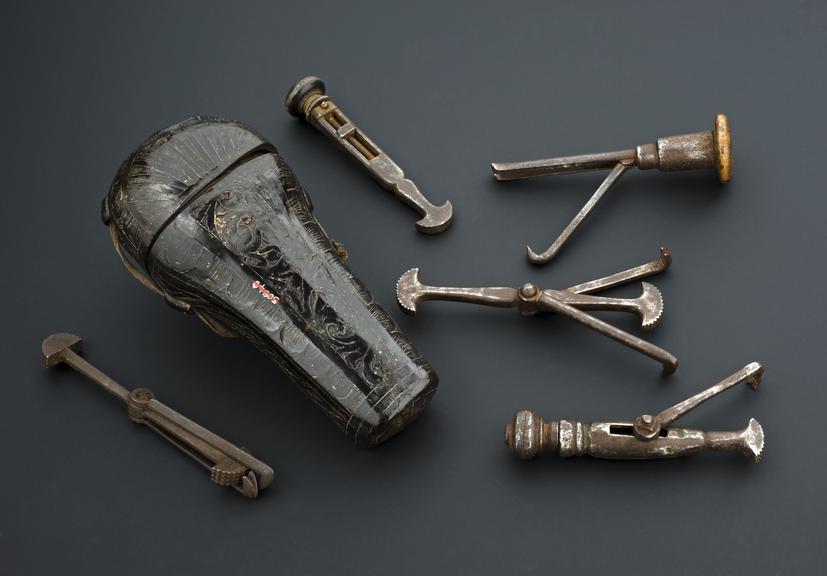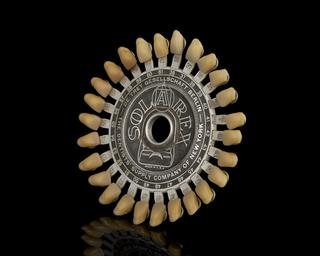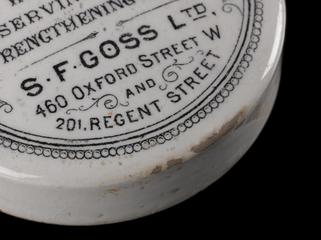Dental instruments used for tooth pulling, France, 1700-1800
Leather dental case with floral design. Holster shaped with lid push fit over the top, lid attached to holster body by cotton tape, no joints apparent, leather is rigid rather than soft.
More
These dental pelicans are so-called because they resemble a pelican’s beak. The instruments were used for tooth pulling – the tooth was removed sideways! The claw was placed over the top of the tooth and the fulcrum, the semi-circular piece of metal at the end, was placed against the gum. The pressure from the lever would remove the tooth. This was undoubtedly painful for the patient and possibly caused damage to the gums and surrounding teeth. Tooth pulling was the only cure for diseased teeth and toothache which was carried out by barber-surgeons and travelling practitioners.






